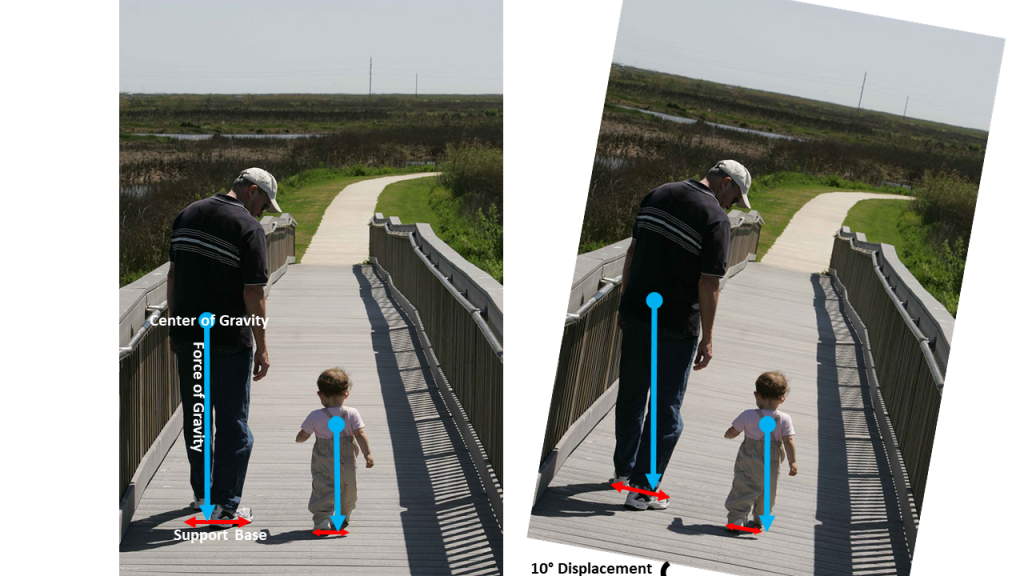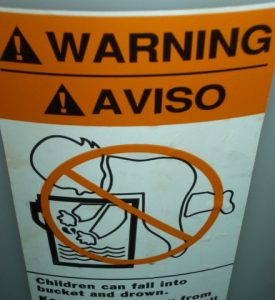43 Human Stability
When asking what makes a structure more or less stable, we find that a high center of gravity or a small support base makes a structure less stable. In these cases a small displacement is need in order to move the center of gravity outside the area of support. Structures with a low center of gravity compared to the size of the support area are more stable. One way to visualize stability is to imagine displacement of the center of gravity caused by placing the object on a slope. For example, a 10° displacement angle might displace the center of gravity of a toddler beyond the support base formed by its feet, while an adult would still be in equilibrium.

The center of gravity of a person’s body is above the pivots in the hips, which is relatively high compared to the size of the support base formed by the feet, so displacements must be quickly controlled. This control is a nervous system function that is developed when we learn to hold our bodies erect as infants. For increased stability while standing, the feet should be spread apart, giving a larger base of support. Stability is also increased by bending the knees, which lowers the center of gravity toward the base of support. A cane, a crutch, or a walker increases the stability of the user by widening the base of support. Due to their disproportionately large heads, young children have their center of gravity between the shoulders, rather than down near the hips, which decreases their stability and increases the likelihood of reaching a tipping point.[2]

Reinforcement Exercises
- " A man and toddler take a leisurely walk on a boardwalk" by Steve Hillebrand, U.S. Fish and Wildlife Service, Wikimedia Commons, is in the Public Domain ↵
- OpenStax, College Physics. OpenStax CNX. Aug 3, 2018 http://cnx.org/contents/031da8d3-b525-429c-80cf-6c8ed997733a@12.1. ↵
- "Drowning Child Warning" by GodsMoon, Wikimedia Commons is licensed under CC BY-SA 2.0 ↵
a point at which the force of gravity on body or system (weight) may be considered to act. In uniform gravity it is the same as the center of mass.
region defined by lines connecting points of contact with the supporting surface
change in position, typically in reference to a change away from an equilibrium position or a change occurring over a specified time interval
the central point, pin, or shaft on which a mechanism turns or oscillates
the network of nerve cells and fibers which transmits nerve impulses between parts of the body
the point at which an object is displaced from a region of stable equilibrium

